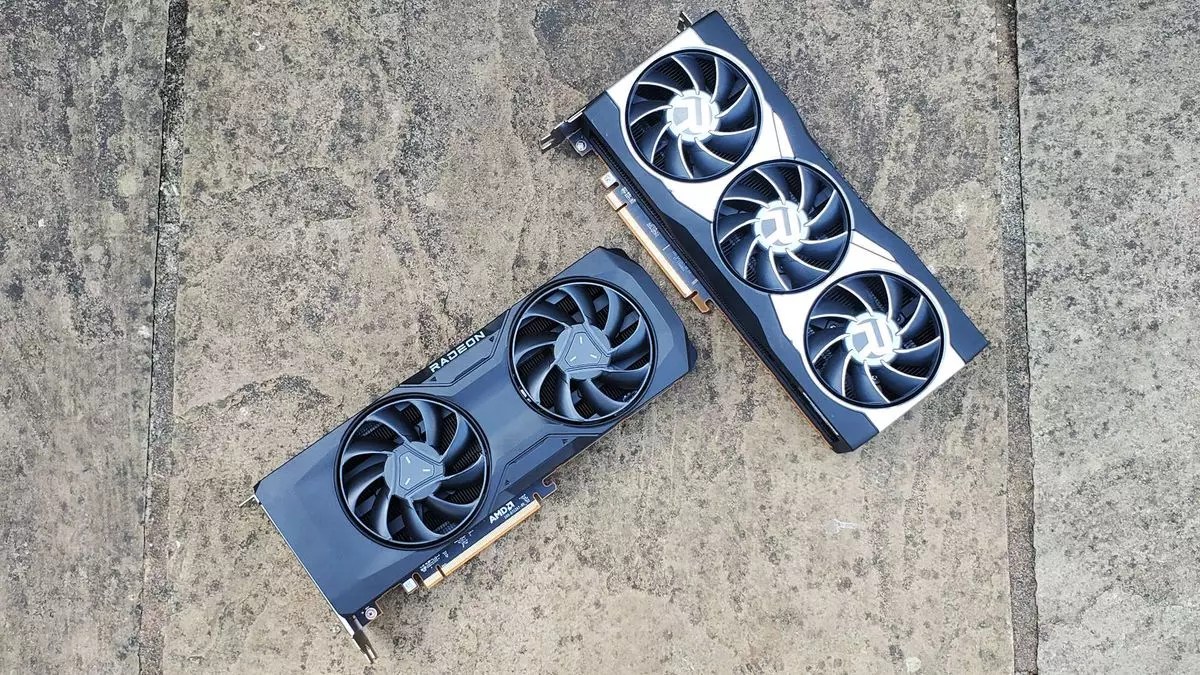The world of graphics processing units (GPUs) is a rapidly evolving landscape, yet AMD finds itself grappling with an enigma: why has it struggled so significantly within the gaming GPU segment? As AMD continues on its upward trajectory in many areas, its performance in PC gaming graphics remains disconcerting. This analysis delves into the factors contributing to AMD’s ongoing difficulties and speculates on what the future may hold.
Following a recent earnings call, AMD CEO Lisa Su proudly announced a remarkable milestone—record-high revenues of $6.8 billion in the third quarter of this year. The growth stemmed from flourishing segments like data center CPUs and GPUs, alongside client CPU sales. However, a closer examination reveals a glaring issue: revenues from gaming have plummeted. Year-on-year, gaming revenue sank by a staggering 69%, now making up less than 10% of AMD’s total sales. This decline marks a significant shift and raises questions about the health and competitiveness of AMD’s gaming GPU offerings.
By AMD’s metrics, “gaming” encapsulates both PC graphics cards and custom APU designs for gaming consoles, such as the highly popular PlayStation and Xbox. The current downturn is undoubtedly exacerbated by a cyclical decline in console sales as these platforms mature. Nevertheless, the drop is alarming for a company that, in many respects, has been thriving. Even with planned releases such as the anticipated PS5 Pro serving as rays of hope, a concerning pattern is emerging: AMD has persistently reported declining numbers in the PC gaming graphics market.
AMD’s previous attempts at innovation in GPU design may offer one explanation for its disarray in the gaming graphics sector. The company’s venture into chiplet architecture—splitting GPUs into smaller, interconnected pieces—has yielded success in CPU development but not in the graphics realm. While this decentralized model has promoted cost savings and configurability in CPUs, applying similar principles to GPUs has proven exceptionally challenging.
The transition from the RDNA 2 architecture, characterized by a more traditional monolithic design, to the RDNA 3 series with its emphasis on chiplets, seemingly confused the market and diluted AMD’s competitive edge. Indeed, the RX 7700, 7800, and 7900 lines have not fared well in terms of performance relative to NVIDIA’s offerings, which are seen as industry standards. It raises the question: was the bold leap toward chiplet designs a miscalculation for a company that had previously thrived on traditional designs?
As AMD looks towards the RDNA 4 architecture, the company seems to be retreating from its chiplet-focused strategy. Speculation indicates that the forthcoming GPUs will revert to a more conventional, monolithic approach, potentially targeting a broader market rather than only the high-end segment. This pivot suggests that AMD may have had second thoughts about the chiplet concept for GPUs, realizing too late that the execution would require more time and refinement than anticipated.
Amidst Changing Focus: The Rise of AI GPUs
While AMD’s challenges in the GPU sector grow increasingly evident, a different picture emerges in the domain of AI GPUs. AMD reported explosive growth in AI-related revenues, which surged from negligible figures to matching its CPU revenue from servers, the cloud, and other integrated systems within just one year. This dramatic shift in focus could explain why the company has seemingly diverted attention away from its gaming graphics line.
Despite the surge in AI revenues, the stagnation of AMD’s PC GPU performance is an anomaly amidst an otherwise flourishing portfolio. For a company that is visibly succeeding in multiple dimensions, the struggles of its gaming graphics segment appear particularly perplexing. It raises questions about management priorities and resource allocation within AMD during this transformative period.
Looking ahead, AMD’s greatest challenge in the PC GPU market remains multifaceted. The shift back to a monolithic design for RDNA 4 could signal potential improvement, but whether these GPUs will reclaim lost market share against NVIDIA remains uncertain. With whispers of a renewed focus on chiplets for RDNA 5, it remains to be seen if AMD can navigate this turbulent terrain successfully.
Ultimately, for all of AMD’s accolades and achievements, the narrative of its gaming GPUs lingers as a notable blemish on its record. As AMD continues to thrive across multiple sectors, the hope is that a concerted effort will emerge to revitalize its position in the PC gaming graphics market. The future may bring clarity and resolution for AMD, but until then, its GPU journey remains an evolving saga filled with both promise and potential pitfalls.


Leave a Reply